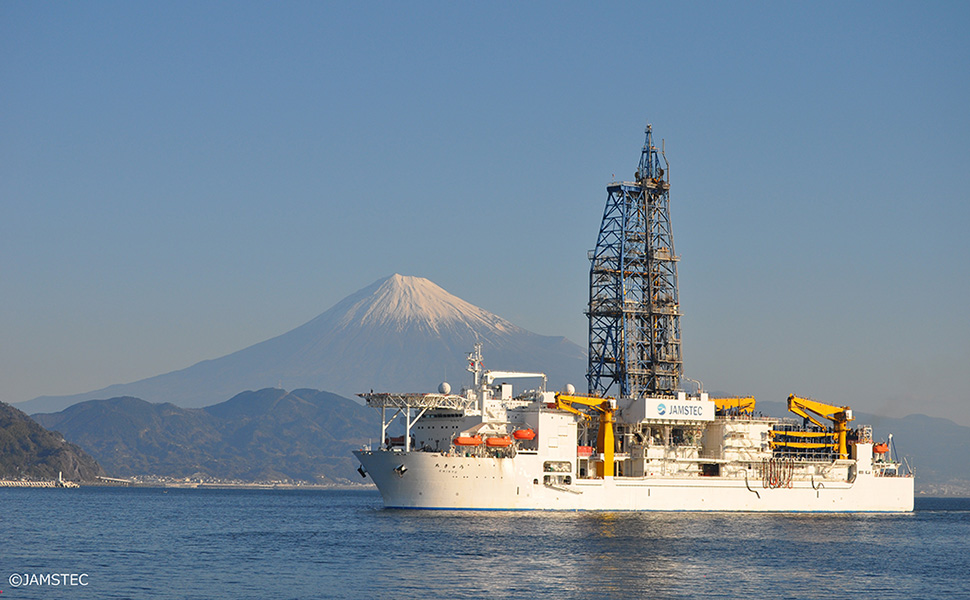Chikyu, completed in July 2005, is a deep-sea scientific drilling vessel with the world's deepest drilling capacity (7,000 m below the seafloor) in science. As one of the vital platforms for the International Ocean Discovery Program (IODP), the research supported by Chikyu explores the mechanism of mega-earthquakes and new frontiers such as the sub-seafloor biosphere, and clarifies future global-scale environmental changes. Chikyu aims to produce science research results that open up the future of mankind.
Understanding marine disasters
To build a safe and secure society in Japan, a country prone to earthquakes and volcanoes, Chikyu drills into seismogenic zones and volcanic areas, directly collects samples and data, to use for research into earthquakes, tsunamis, volcanic activity, and sub-sea landslides, that occur on the timescale of human activity. Chikyu also installs observatories in boreholes below the ocean floor that are connected to a seafloor cabled network, providing real-time data to the land as soon as the earthquake occurs. In the future, this seismic observation network is expected to be useful for urban disaster prevention.
Elucidating the global climate and ocean changes
To help model how the climate, oceans, and ice sheets will respond to the current rapid increase in greenhouse gases, Chikyu drills into the ocean floor to recover sediment cores containing records of past environmental and climatic conditions. We hope that the data collected from marine sediment cores will help us to better understand the mechanisms of climate and ocean changes that occur on short- to long-term scales.
Understanding the subseafloor biosphere
Life began on an ancient Earth with an environment with high temperatures, high pressures, and no oxygen. Even on Earth in the present-day, environments similar to the primitive Earth can be found deep underground. Chikyu drills below the seafloor, searching to discover primitive underground life, clarifies their habitats and diversity, and tracks the evolution of life, in accompanying environmental changes. We hope this will help us to better understand the mystery of the origin of life, and also including the development of humankind.





